Leigh Hynes is from Taupo, New Zealand. She has been employed by the University of Waikato as a Digital Fluency Facilitator since 2013, and her role is working in schools to build capability in using digital technologies. Her long background in secondary school teaching and leadership has led to a commitment to enhancing learning using digital technologies.
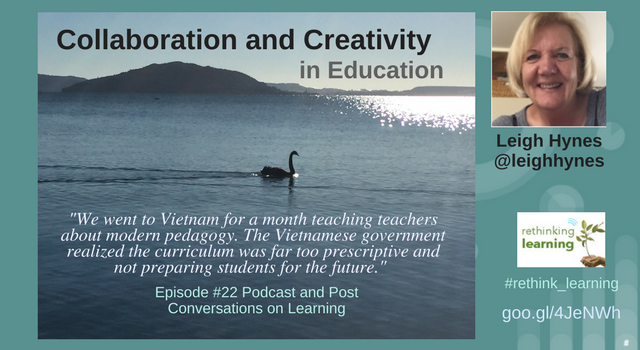
Podcast: Play in new window | Download
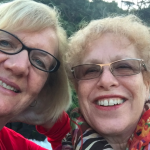 Over the last few years, I have developed a special relationship with Leigh. First, she had to make sure I pronounced where she lives correctly “Toe Paw” for Taupo. I had so much fun being able to get to know Leigh where she lives, about her family, her team, and about New Zealand. I am excited to share her story or what is called a Mihi with you. Below are excerpts from the podcast.
Over the last few years, I have developed a special relationship with Leigh. First, she had to make sure I pronounced where she lives correctly “Toe Paw” for Taupo. I had so much fun being able to get to know Leigh where she lives, about her family, her team, and about New Zealand. I am excited to share her story or what is called a Mihi with you. Below are excerpts from the podcast.
Can you share with me about you, your family and your background in New Zealand?
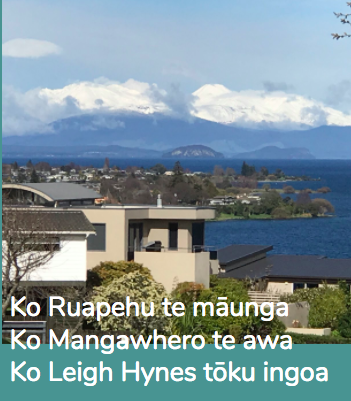 In New Zealand, we have a ceremony that we call a “Mihi” where we introduce ourselves starting with our mountain on the North Island. My mountain is Ruapehu that I identify with and where I’ve been brought up. We then go to the Mangowhero River. We start with the biggest things and then go to the smallest significant things in our lives. It is a cultural discourse about your family and where you come from. It’s very important to share that with the Maori culture and New Zealand. New Zealand is a bi-cultural nation. When the Europeans came to the island, they had an agreement with the Maori people to acknowledge both cultures.
In New Zealand, we have a ceremony that we call a “Mihi” where we introduce ourselves starting with our mountain on the North Island. My mountain is Ruapehu that I identify with and where I’ve been brought up. We then go to the Mangowhero River. We start with the biggest things and then go to the smallest significant things in our lives. It is a cultural discourse about your family and where you come from. It’s very important to share that with the Maori culture and New Zealand. New Zealand is a bi-cultural nation. When the Europeans came to the island, they had an agreement with the Maori people to acknowledge both cultures.
I have two beautiful daughters and a granddaughter who lives in Perth. I have a lovely husband, Dan, who is from Wisconsin. I was trained to be a microbiologist working in Wellington and then I ended up married to someone in the middle of nowhere where I asked the schools there if they needed a scientist to teach in their schools. That’s how I started teaching. From that strange entry point, I worked my way through the years to become deputy principal at Ruapehu College.
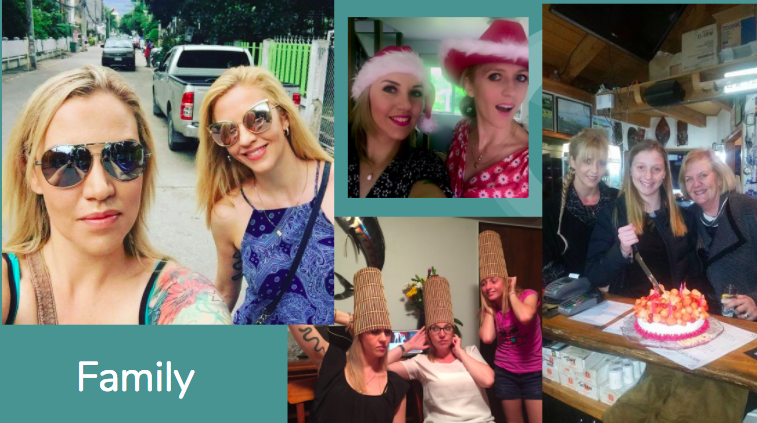
I’ve been in Senior Management for the last 12 years. In 2012, I was offered a job to work as a digital technology facilitator when I was at the college at that time. By the way, our secondary schools are called colleges. Ruapehu is an isolated school pretty much in the center of the north island where there are very few connections to other schools. I was very lucky to be part of the VPLD (Virtual Professional Learning Development). I had a mentor and learned a lot about digital technologies by setting my own goals with her and moving forward in that way. I realized the power of video and started having my students make videos that helped them understand the content of science.
I’ve known you for some time on social media and met you at ISTE. Share how that happened.
I got into Facebook and never really been a huge twitterer – not sure that’s a word. Eventually, I learned a lot through social media. When I started working for the University of Waikato, someone presented us with your Personalization vs Differentiation vs Individualization chart. That was so helpful in getting schools and teachers to understand the difference between the terms. When I saw your name at ISTE, I really was hoping to meet you in person and there you were sitting across from me in one of the first workshops I was in. I took a secret photograph of you and then put it up on Twitter about the famous Barbara Bray sitting right across from me. I was so excited. I was so privileged to meet so many people I know on social media actually in person. In fact, the first person I met was Daniel Rezac. Here are a few of the pictures I took at ISTE 2016 in Denver and I included the one with you, me and Anne Kenneally.
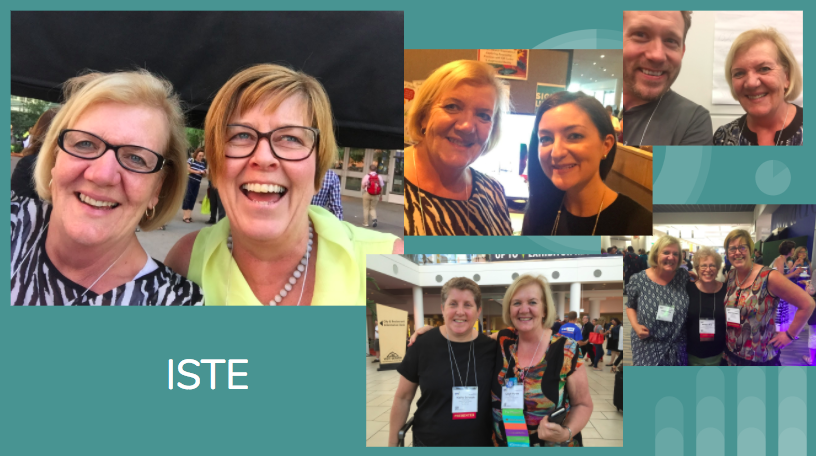
Tell about some of your projects at the University of Waikato
For the past 4 years, I have been working in schools across New Zealand to help build capacity for eLearning. The ministry actually provided free learning for teachers for some schools throughout New Zealand. It has been my job basically to lead the team on the central north island. This year some things have changed a bit. It’s a whole new environment for us because the ministry has moved the responsibility back into the schools for their own professional development. There is a little provision for the schools that allows us to work with them. But this has caused us to move from a team of 70 to 40 people. This is the first year that I have been employed to work through the ministry but most directly with schools. We also have a little bit and bobs from other places. Recently I went to Vietnam and worked with teachers over there. My job is different than it has been but it is giving me a different variety of types of work.
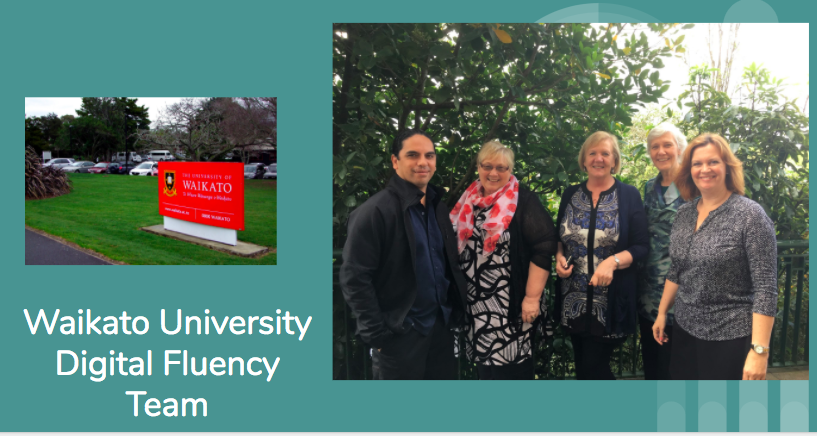
I know you went to Vietnam with Mary Jamieson. Share a little about what you did there.
We went to Vietnam in July for a month, two weeks in Hanoi, and two weeks in Ho Chi Minh. It was teaching teachers about modern pedagogy. We had six units of work on how to get to know your students, how to do student-centered learning, the assessment with a formative assessment focus, classroom management. The Vietnamese government has realized that the curriculum was far too prescriptive and not preparing students for the future. So they are looking at changing things. We were working with a private school but there are opportunities that we may develop into nationwide work. Here’s a blog post about my experience in Hanoi and another about my experience in Ho Chi Minh
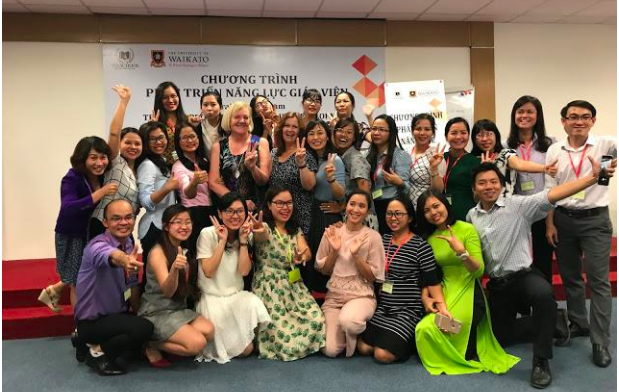
In Vietnam, although the focus was on modern pedagogy, I was slipping a little of digital technologies here and there as much as I could. The teachers really loved that. China is looking at ways to bring more creativity into their schools. When you look at China that has an industrial model realizing that they also need to change teaching and learning because everything is changing which impacts education. Even the countries that you think are behind in terms of pedagogy are moving. If there are still people out there that haven’t woken up yet, it’s time to do it. I mentioned Andreas Schleicher and want to share this video with you:
Share what is so unique about the NZ curriculum and digital learning.
We consider ourselves very lucky because we have a curriculum framework. It is up to each school to look at their community and build the curriculum within that framework to decide what is important for their students. We have key competencies which are really is the most important part that we call the “fronting” of the curriculum. This is about developing thinking skills, being able to participate, etc.
These key competencies are:
- Thinking
- Relating to Others
- Understanding Text
- Managing Self
- Participating and Contributing
How about sharing about one of the schools we visited?
We went to visit Te Kowhai School with an amazing principal, Tony Grey. His school is one of the leading schools in New Zealand. Tony has moved toward the ILEs, innovative learning environments. It is where the students are not sitting in rows. They are in large spaces and are all doing different things depending on what they have chosen as their goal for the time. He has a lot of support from his community that he’s had to build up over the years. It is a long process to gain the confidence of parents because they want their children to be taught the way they were taught and that’s what made them successful. You have to educate parents and the community about what the future might look like, and, therefore, how we can make sure our students are prepared for their futures.

In Te Kowhai, they have large, open spaces. We watched some students when they had several relief teachers and the students were going about their work because that is what they are used to. Their teachers do not tell them what and when to do something. They could talk about their learning. I remember you stuck yourself in one of the side rooms with a group of kids working on their passion projects. They were so excited telling you about what they were learning about that we couldn’t get you to leave.
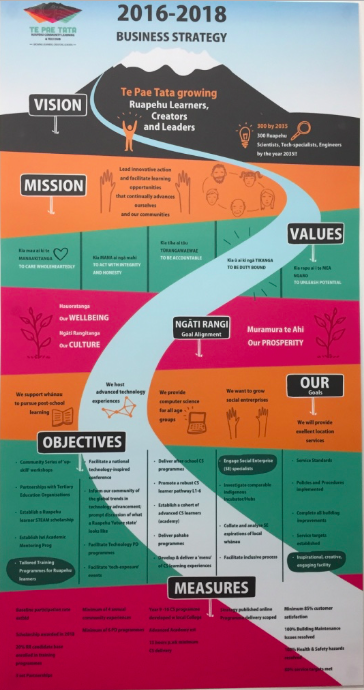
Cynthia Sistek-Chandler and I also visited your school in Ruapehu.
Ruapehu College has received much support from the local Maori tribe. They put a lot of money into a learning hub which the community comes into as well. The image at the right shows the work they did to develop a business strategy for the community (Te Pae Tata) for all Ruapehu learners, creators, and leaders.
They are free to develop their own passion projects around digital technologies. So they are doing some coding and robots. The digital technology teacher, Kawana, came up with innovative ways for kids to be curious and creative. He has the kids take apart devices and put them back together again, come up with new ways to use old technology or apps, and write reviews for programs. His energy and passion were exciting and it was an honor to be there and watch how he encouraged kids to think and talk about their thinking.
What’s next for you and how can we get together again?
At the moment, I am working with the ministry in Wellington every month change and enablement committee for the new digital technology curriculum. They are looking at coding, computational thinking, and robotics. Being able to bring out into the education system so every teacher has the capability to use coding or computational thinking in their teaching and learning with their students. We are getting that ready to use at the beginning of 2018.
Now that the ministry has focused on COLs (Communities of Learners) where schools are grouped to support each other, my team is looking at strategies to support individual schools with the new digital technology curriculum. There is one more recent development from COOLs Communities of Online Learners provides opportunities for schools to develop their own COOLs.
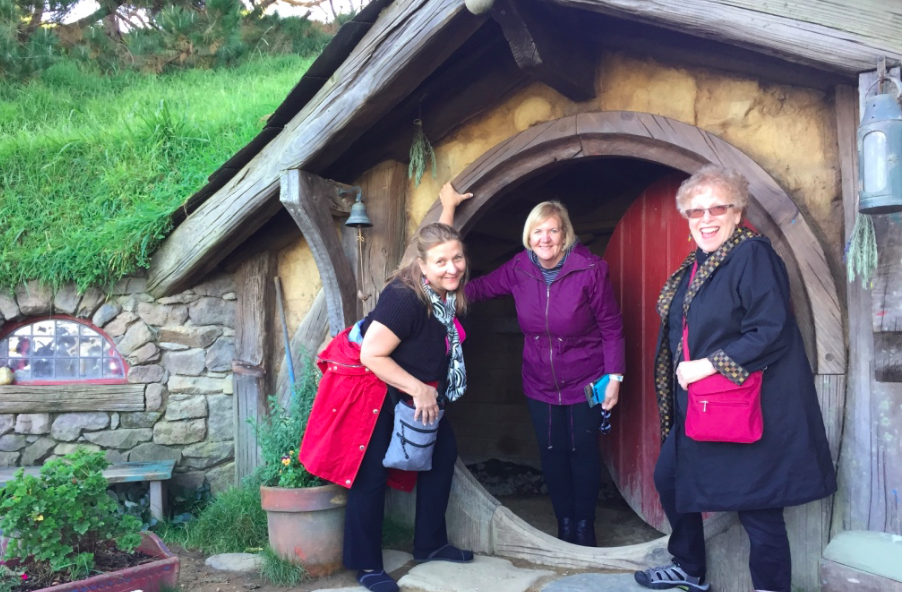
Cynthia Chandler and I had some interesting adventures including a trip to Hobbiton with Leigh, so I had to include a picture of the three of us.
***
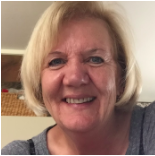 Leigh Hynes is from Taupo, New Zealand. She has been employed by the University of Waikato as a Digital Fluency Facilitator since 2013, and her role is working in schools to build capability in using digital technologies. Her long background in secondary school teaching and leadership has led to a commitment to enhance learning using digital technologies. She was awarded a 10-week sabbatical in 2012 to investigate the use of e-portfolios in schools, achieved a Graduate Diploma of Information Technology for Educators with Distinction in 2014 and became an authorized Google Education Trainer, August 2014. Her journey continues with strong interests in flipped learning and using tools that promote connectedness, collaboration, and creativity. She is currently working with the Ministry of Education Change and Enablement Committee as New Zealand introduces its new digital technologies curriculum.
Leigh Hynes is from Taupo, New Zealand. She has been employed by the University of Waikato as a Digital Fluency Facilitator since 2013, and her role is working in schools to build capability in using digital technologies. Her long background in secondary school teaching and leadership has led to a commitment to enhance learning using digital technologies. She was awarded a 10-week sabbatical in 2012 to investigate the use of e-portfolios in schools, achieved a Graduate Diploma of Information Technology for Educators with Distinction in 2014 and became an authorized Google Education Trainer, August 2014. Her journey continues with strong interests in flipped learning and using tools that promote connectedness, collaboration, and creativity. She is currently working with the Ministry of Education Change and Enablement Committee as New Zealand introduces its new digital technologies curriculum.
Blog: Hynessight http://royalhynesight.blogspot.co.nz
Youtube channel: https://www.youtube.com/c/LeighHynes
Twitter: @leighhynes
Facebook: https://www.facebook.com/leigh.hynes
LinkedIn: https://www.linkedin.com/in/leigh-hynes-79950b44/
Here’s a video Leigh shared with a Maori song along with the translation:
| Tūtira mai ngā iwi
Tūtira mai ngā iwi, tātou tātou e Tūtira mai ngā iwi, tātou tātou e Whai-a te marama-tanga, me te aroha – e ngā iwi! Ki-a ko tapa tahi, Ki-a ko-tahi rā Tātou tātou e (Repeat) Tā-tou tā-tou e E!! Hi aue hei !!! |
English Translation
Line up together people All of us, all of us Stand in rows people All of us, all of us Seek after knowledge and love of others – everyone Think as one Act as one All of us, all of us All of us, All of us!! Hi aue hei !!!
|
*****
For all of the Rethinking Learning podcasts with Barbara Bray, click on the podcast tab at the top, the logo below, or go to https://barbarabray.net/podcasts/
Go to this page for resources, questions, and more information about Barbara’s new book, Define Your WHY.






Great work, I don’t have words to appreciate the author